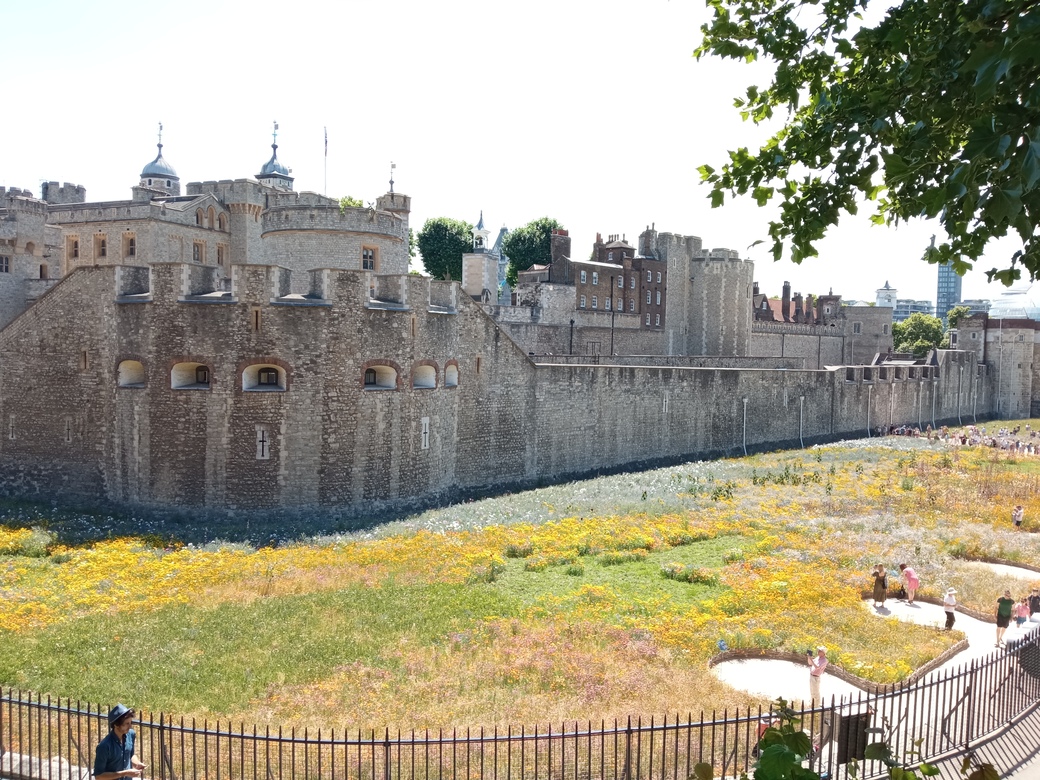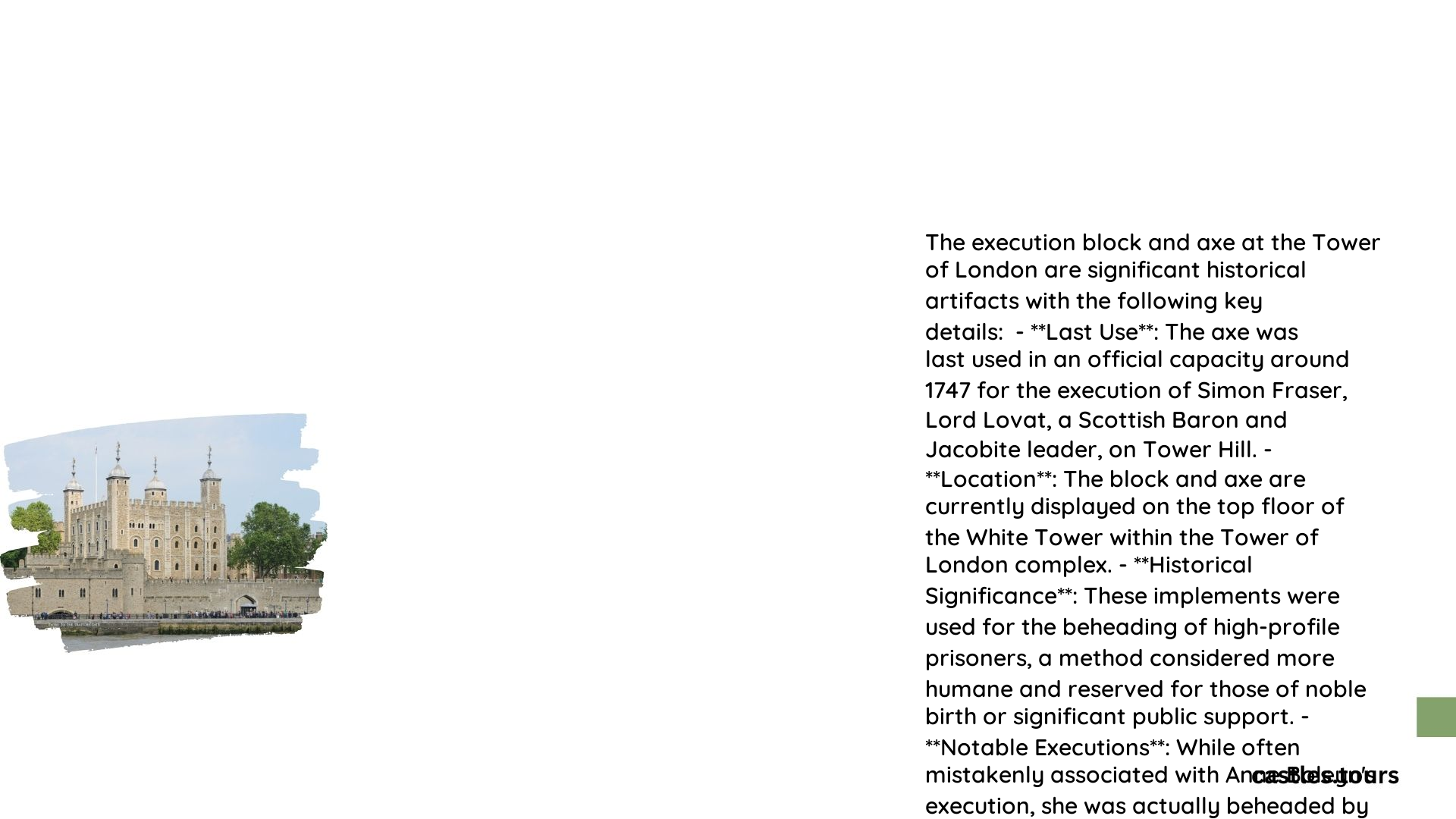The Tower of London block and axe stand as chilling symbols of royal executions in British history. These instruments of capital punishment were reserved for high-ranking individuals, including nobles and royalty. The axe, last used officially in 1747, now resides in the White Tower. Executions often occurred on Tower Green, a secluded area within the Tower grounds, to maintain privacy for notable prisoners. The block and axe played crucial roles in the deaths of prominent figures like Anne Boleyn and Catherine Howard.
What Was the Purpose of the Tower of London Block and Axe?

The block and axe served as tools for carrying out capital punishment, specifically beheading, for high-status individuals. This method was considered more humane than other forms of execution, such as hanging, and was thus reserved for nobles and royalty. The use of these instruments within the Tower of London grounds also provided a level of privacy and control over the execution process.
Where Were the Block and Axe Used?

The primary location for executions using the block and axe was Tower Green, a small area within the Tower of London complex. This site was chosen for several reasons:
- Privacy: It kept executions away from public view
- Security: It allowed for better control of the event
- Dignity: It offered a more dignified setting for high-ranking prisoners
- Crowd control: It prevented potential public disturbances
Ten notable individuals were beheaded on Tower Green, including three former queens of England: Anne Boleyn, Catherine Howard, and Lady Jane Grey.
Who Were the Most Famous Victims of the Block and Axe?
Several high-profile executions took place using the Tower of London block and axe. Some of the most notable victims include:
- Anne Boleyn (1536): Second wife of Henry VIII
- Catherine Howard (1542): Fifth wife of Henry VIII
- Lady Jane Grey (1554): Known as the “Nine Days’ Queen”
- Simon Fraser, Lord Lovat (1747): The last person executed with the axe
Each of these executions marked significant moments in British history and contributed to the grim legacy of the Tower of London.
What Was the Role of the Executioner?
The executioner played a crucial role in the beheading process. Their skill and experience could significantly affect the suffering of the condemned. Key aspects of the executioner’s role included:
- Ensuring a swift and clean death
- Maintaining the sharpness of the axe
- Receiving gratuities from prisoners for a quick death
- Participating in ceremonial processions
Prisoners often paid executioners extra to ensure a swift and painless beheading. An inexperienced or intoxicated executioner could result in multiple blows, causing unnecessary suffering.
How Was the Axe Used in Tower Ceremonies?
The axe played a symbolic role in Tower ceremonies:
- Processions: The Tower’s jailer (gaoler) carried the ceremonial axe
- Prisoner fate indication: The direction of the axe blade signaled the prisoner’s fate
- Symbol of authority: The axe represented the Tower’s power over life and death
These ceremonial uses added to the psychological impact of imprisonment in the Tower of London.
What Are the Physical Characteristics of the Block and Axe?
While specific dimensions of the execution block are not provided in historical records, it is described as a thick wooden block. The axe, however, can be observed in the White Tower today. Its characteristics include:
- Heavy iron head
- Wooden handle
- Blade length suitable for beheading
The axe’s design was intended to deliver a swift, powerful blow to ensure a quick death.
How Did the Execution Process Unfold?
The execution process using the block and axe followed a specific protocol:
- Prisoner preparation: The condemned was led to Tower Green
- Final words: The prisoner was allowed to address the witnesses
- Positioning: The prisoner knelt at the block
- Execution: The axe was swung to sever the head
- Aftermath: The head was often displayed as a warning to others
This process could vary slightly depending on the status of the prisoner and the specific circumstances of the execution.
What Rules Governed Executions at the Tower?
Several rules and customs governed executions at the Tower of London:
- Location privilege: Executions within the Tower were reserved for high-ranking individuals
- Method choice: Some prisoners could choose between axe and sword
- Time of day: Executions typically occurred in the morning
- Witnesses: A select group was allowed to observe the execution
- Burial: Some prisoners were granted burial within the Tower grounds
These rules reflected the social hierarchies and customs of medieval and early modern England.
How Has the Legacy of the Block and Axe Endured?
The legacy of the Tower of London block and axe continues to captivate visitors and historians:
- Museum display: The axe is now exhibited in the White Tower
- Historical tours: The execution site is a key stop on Tower tours
- Cultural impact: The block and axe feature in literature, film, and television
- Symbol of power: They represent the harsh realities of historical royal authority
This enduring fascination ensures that the grim history of the Tower’s executions remains a part of British cultural memory.
References:
- https://stephenliddell.co.uk/2023/08/22/the-executioners-axe-at-the-tower-of-london/
- https://billnewcott.com/the-tower-of-london
- https://www.atlasobscura.com/places/the-executioners-ax
